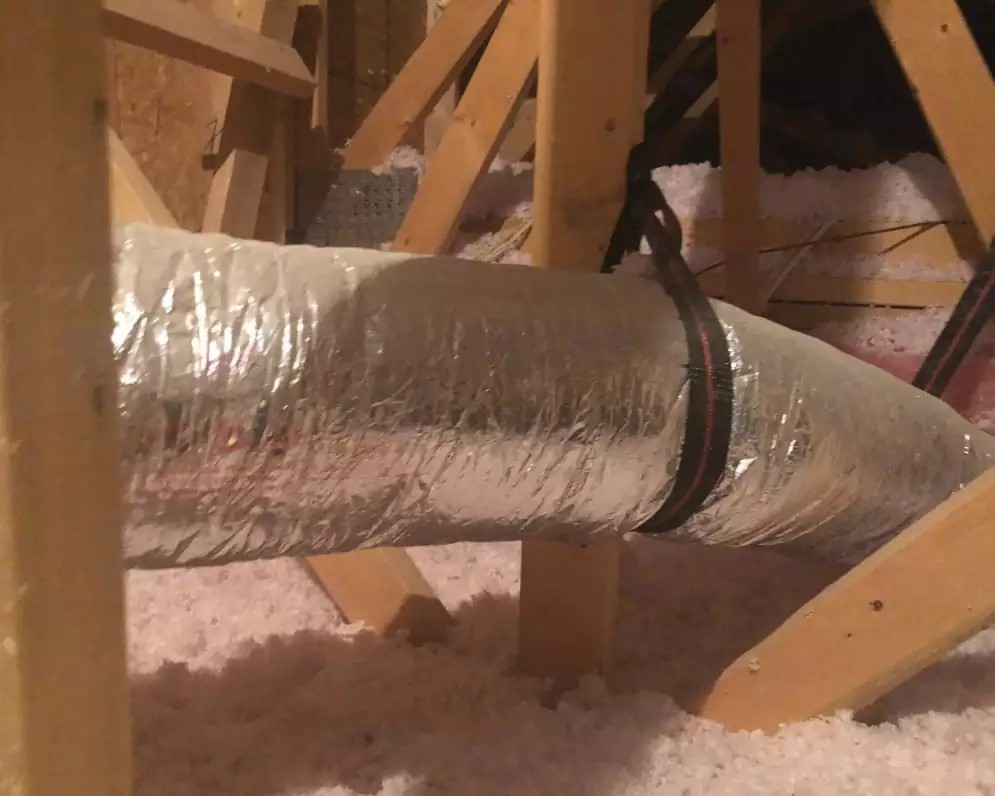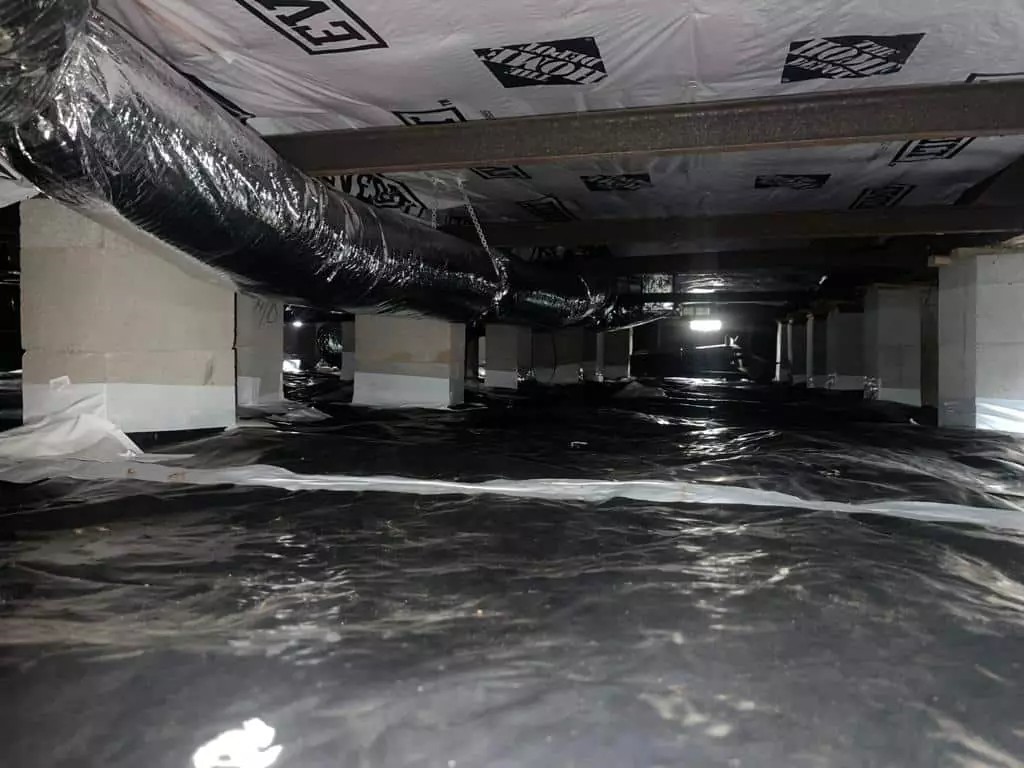When aiming to establish a cozy and health-conscious indoor atmosphere, the performance of your HVAC system proves pivotal. An effective HVAC system not only guarantees precise temperature regulation but also fosters energy conservation and ecological responsibility. Through diminished energy usage, these efficient HVAC systems curtail the carbon footprint, presenting a sustainable option for residences and businesses alike. For those in need of help from an air duct repair company in Walnut Creek, selecting an efficient HVAC system becomes doubly crucial in ensuring lasting comfort and environmental friendliness.
The efficiency of an HVAC system is directly impacted by the design and condition of its air ducts. Properly designed and maintained air ducts play a significant role in ensuring the efficient operation of the entire HVAC system. From distributing conditioned air evenly to minimizing energy losses, the design of the air ducts can make a substantial difference in the overall performance of the HVAC system.
Understanding the principles of HVAC efficiency and the role of air duct design is essential for homeowners and property managers. By being aware of how duct design influences HVAC efficiency, individuals can make informed decisions to optimize their indoor comfort while minimizing energy consumption.

Understanding Air Duct Design
Air duct design refers to the layout and configuration of the ductwork within an HVAC system. The design of air ducts is critical for ensuring proper airflow and distribution of conditioned air throughout the building. A well-designed duct system takes into account the size of the space, the location of vents, and the airflow requirements for each area.
The primary goal of air duct design is to minimize energy losses and maintain consistent airflow. This involves considerations such as the selection of appropriate duct materials, the sizing of ducts based on airflow requirements, and the strategic placement of vents and registers. Proper insulation and sealing of ducts also play a crucial role in preventing air leaks and maintaining the efficiency of the HVAC system.
Understanding the fundamentals of air duct design empowers homeowners and building managers to assess the performance of their HVAC systems. By recognizing the impact of duct design on energy efficiency, individuals can take proactive steps to address any issues and optimize the overall performance of their HVAC systems.
Common Issues With Air Ducts
Despite the importance of air duct design, many HVAC systems suffer from common issues that compromise their efficiency. Ductwork problems such as air leaks, improper sizing, and inadequate insulation can lead to energy wastage and reduced performance. Air leaks, in particular, can result in significant energy losses as conditioned air escapes from the ducts before reaching its intended destination.
Improperly sized ducts can lead to uneven airflow distribution, causing certain areas of a building to be over-conditioned while others remain inadequately heated or cooled. Inadequate insulation in ductwork can also contribute to energy losses, as it allows for heat transfer between the conditioned air and the surrounding environment.
Understanding these common issues with air ducts is essential for identifying potential efficiency challenges within an HVAC system. By recognizing the symptoms of ductwork problems, homeowners and property managers can take proactive measures to address these issues and improve the overall efficiency of their HVAC systems.
Impact of Duct Design on HVAC Efficiency
The impact of duct design on HVAC efficiency cannot be overstated. Well-designed air ducts contribute to optimal airflow, even distribution of conditioned air, and minimal energy losses. On the other hand, poorly designed or deteriorating ductwork can result in reduced efficiency, increased energy consumption, and compromised indoor comfort.
Properly designed ducts facilitate the smooth flow of air from the HVAC system to the living or working spaces, ensuring that the desired temperature is achieved with minimal energy expenditure. They also play a crucial role in maintaining indoor air quality by effectively filtering and distributing the conditioned air throughout the building.
In contrast, inefficient duct design can lead to a range of problems, including reduced airflow, uneven temperature distribution, and increased energy bills. By recognizing the impact of duct design on HVAC efficiency, individuals can take proactive steps to assess and address any issues within their ductwork to ensure optimal system performance.
Signs of Inefficient Duct Design
Identifying the signs of inefficient duct design is essential for maintaining the optimal performance of an HVAC system. Common indicators of inefficient duct design include uneven temperature distribution, excessive dust accumulation, and noticeable air leaks around the ductwork. Additionally, rooms that are consistently too hot or too cold, despite the HVAC system running, can also point to potential ductwork issues.
Unusual noises coming from the ducts, such as rattling or whistling sounds, may indicate airflow restrictions or obstructions within the ductwork. High energy bills without a corresponding increase in heating or cooling performance can also be a sign of inefficient duct design, as the system may be working harder to compensate for airflow or insulation issues.
By being attentive to these signs, homeowners and property managers can identify potential problems with their ductwork and take the necessary steps to address them. Professional inspection and evaluation of the air duct system can help pinpoint specific areas of concern and guide the implementation of targeted solutions to improve HVAC efficiency.
Benefits of Professional Air Duct Repair
Addressing inefficient duct design through a professional air duct repair company in Walnut Creek offers a range of benefits for homeowners and property managers. By enlisting the expertise of qualified HVAC professionals, individuals can access comprehensive solutions to improve the performance and efficiency of their ductwork.
Professional air duct repair services typically include thorough inspection and diagnostic assessment of the duct system to identify any issues impacting its efficiency. This may involve using advanced tools and techniques to detect air leaks, assess insulation integrity, and evaluate the overall condition of the ductwork.
Once the specific issues are identified, HVAC professionals can implement targeted repairs and upgrades to address inefficiencies within the duct system. This may include sealing air leaks, replacing damaged insulation, resizing ducts for better airflow distribution, and optimizing the layout of the ductwork to enhance overall efficiency.
By investing in professional air duct repair, homeowners and property managers can experience improved HVAC performance, enhanced indoor comfort, and reduced energy consumption. Additionally, addressing ductwork issues proactively can contribute to the longevity of the HVAC system, minimizing the need for costly repairs or premature replacements.
Maintaining Efficient Duct Design
After addressing any inefficiencies through professional air duct repair, maintaining efficient duct design is essential for the long-term performance of an HVAC system. Regular maintenance and care of the ductwork help ensure that the system continues to operate at optimal efficiency, delivering reliable comfort and energy savings.
Routine inspections of the ductwork, in conjunction with scheduled HVAC maintenance, can help identify any emerging issues before they escalate into significant problems. This proactive approach allows for timely repairs and adjustments to be made, preventing potential efficiency setbacks and preserving the overall performance of the HVAC system.
In addition to professional maintenance, homeowners and property managers can contribute to maintaining efficient duct design by being mindful of their daily habits and activities. Simple practices such as changing air filters regularly, keeping vents and registers unobstructed, and minimizing activities that generate dust can all contribute to the longevity and efficiency of the ductwork.
By prioritizing the ongoing care and maintenance of the duct system, individuals can ensure that their HVAC system continues to operate at peak efficiency, providing reliable comfort and energy savings for years to come.

Frequently Asked Questions About Air Duct Repair Company in Walnut Creek
What services does an air duct repair company offer?
An air duct repair company in Walnut Creek offers a range of services aimed at improving the efficiency and performance of HVAC duct systems. These services may include comprehensive duct inspection, diagnostic assessment of ductwork issues, air leak detection and sealing, insulation repair or replacement, duct resizing and reconfiguration, and overall optimization of the duct system for improved efficiency and airflow distribution.
How can I tell if my air ducts need professional repair?
Signs that your air ducts may require professional repair include uneven temperature distribution, excessive dust accumulation, noticeable air leaks, unusual noises coming from the ducts, and high energy bills without a corresponding increase in heating or cooling performance. Professional inspection and evaluation of the duct system by qualified HVAC professionals can help identify specific issues and guide the implementation of targeted solutions to improve HVAC efficiency.
What are the benefits of professional air duct repair?
Professional air duct repair offers benefits such as improved HVAC performance, enhanced indoor comfort, reduced energy consumption, and increased longevity of the HVAC system. By addressing inefficiencies within the ductwork through professional repair, homeowners and property managers can experience reliable comfort and energy savings while minimizing the need for costly repairs or premature replacements.
Revitalize Your Home Comfort With Attic Efficiency; Most Trusted Air Duct Repair Company in Walnut Creek!
The impact of duct design on HVAC efficiency is undeniable. Properly designed and maintained air ducts are essential for ensuring optimal airflow, even temperature distribution, and minimal energy losses within an HVAC system. By understanding the principles of air duct design and recognizing the signs of inefficient ductwork, homeowners and property managers can take proactive steps to address any issues and optimize the performance of their HVAC systems.
Professional air duct repair services offer comprehensive solutions for improving the efficiency and performance of duct systems, leading to enhanced indoor comfort, reduced energy consumption, and increased HVAC longevity. By investing in professional repair and prioritizing ongoing maintenance, individuals can revitalize their home comfort and experience the benefits of efficient duct design for years to come.

